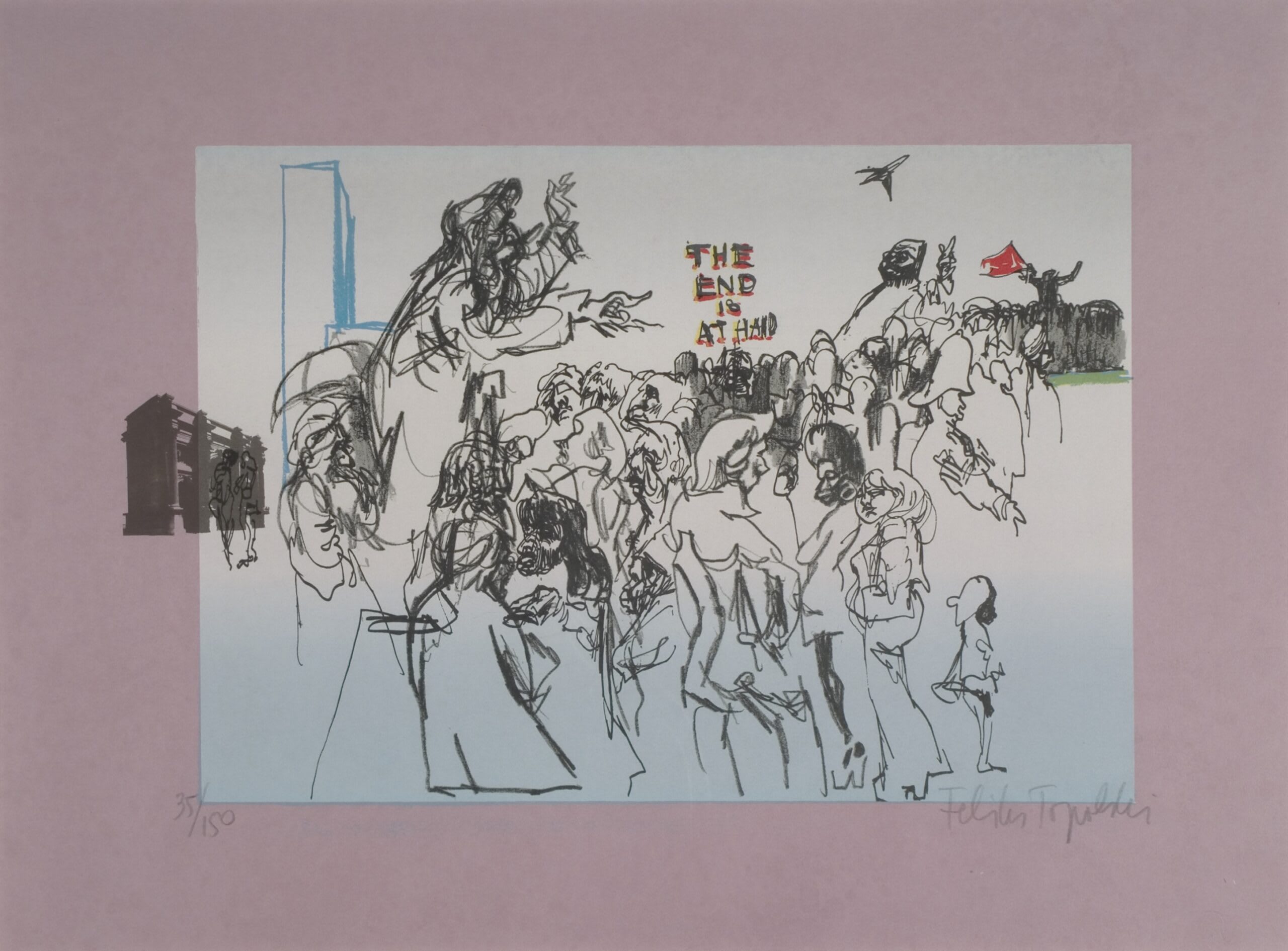Punks, Princes and Protests: The Chronicles of Feliks Topolski RA
The exhibition, set to coincide with the Coronation of H.M. King Charles III, explores Feliks Topolski’s heritage, connections to the British Royal family, and his commitment to the art of eye-witness impartial reportage. In so doing, it showcases how Topolski seamlessly oscillated between the Establishment and Counter-Culture, taking equal interest in depicting and socialising with both high society and London’s cultural underbelly.
The exhibition is open every day, 9am – 9pm at POSK Gallery.
Feliks Topolski RA (1907-1989), Coronation Rehearsal of H.M. Queen Elizabeth II, From Topolski’s Chronicle (Front Cover), Coronation, Vol.I, No.1, 1953 Lithograph on paper, © Topolski Estate
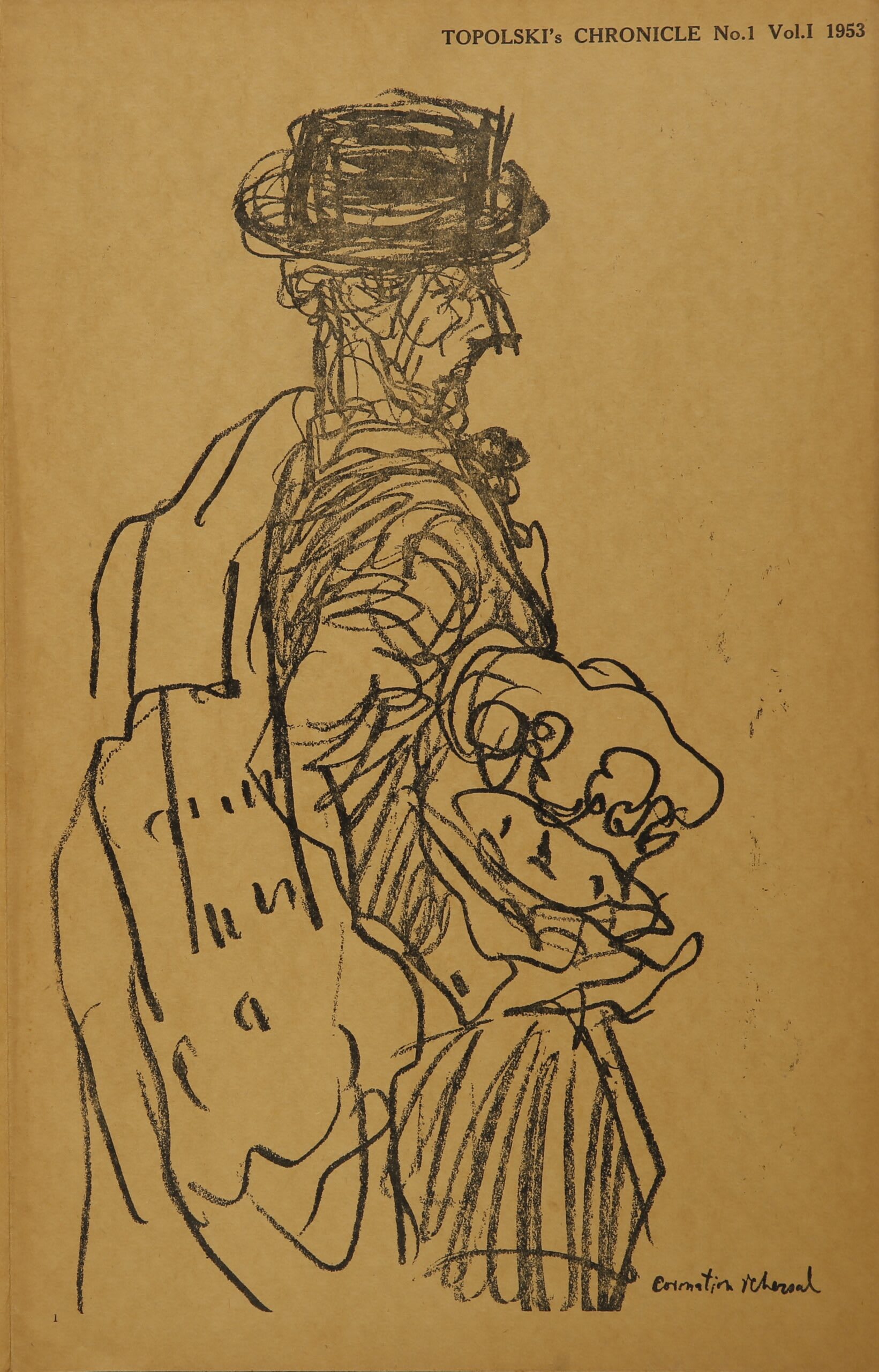
Topolski’s commission from the British Government to record H.M. Queen Elizabeth II’s coronation in 1953 – exactly 70 years ago – became the impetus for starting Topolski’s Chronicle, his own bi-monthly broadsheet featuring eyewitness drawings published between 1953 and the early 1980s. From punks and hippies to royalty and politics, Topolski observed a new multi-cultural and contradictory Britain trying to form itself, whilst his globetrotting lifestyle documented the collapse of its Empire overseas. He frequently covered themes of colourful British pomp and spectacle, as well as the nation’s outrages, injustices and inequalities.
By observing the changing currents of British history between coronations, the exhibition centres on the Chronicle and selected paintings to reflect upon Topolski’s historical and culturally resonant insights from the past century.
Topolski Memoir, a charity responsible for the promotion and preservation of Feliks Topolski’s legacy (based at his original Studio on the South Bank), has generously lent works to this exhibition.
Feliks Topolski RA (1907-1989), Coronation of Queen Elizabeth II: In the Streets, part of the Buckingham Palace Panoramas series, oil on canvas, 1960, Royal Family Collection, © Topolski Estate
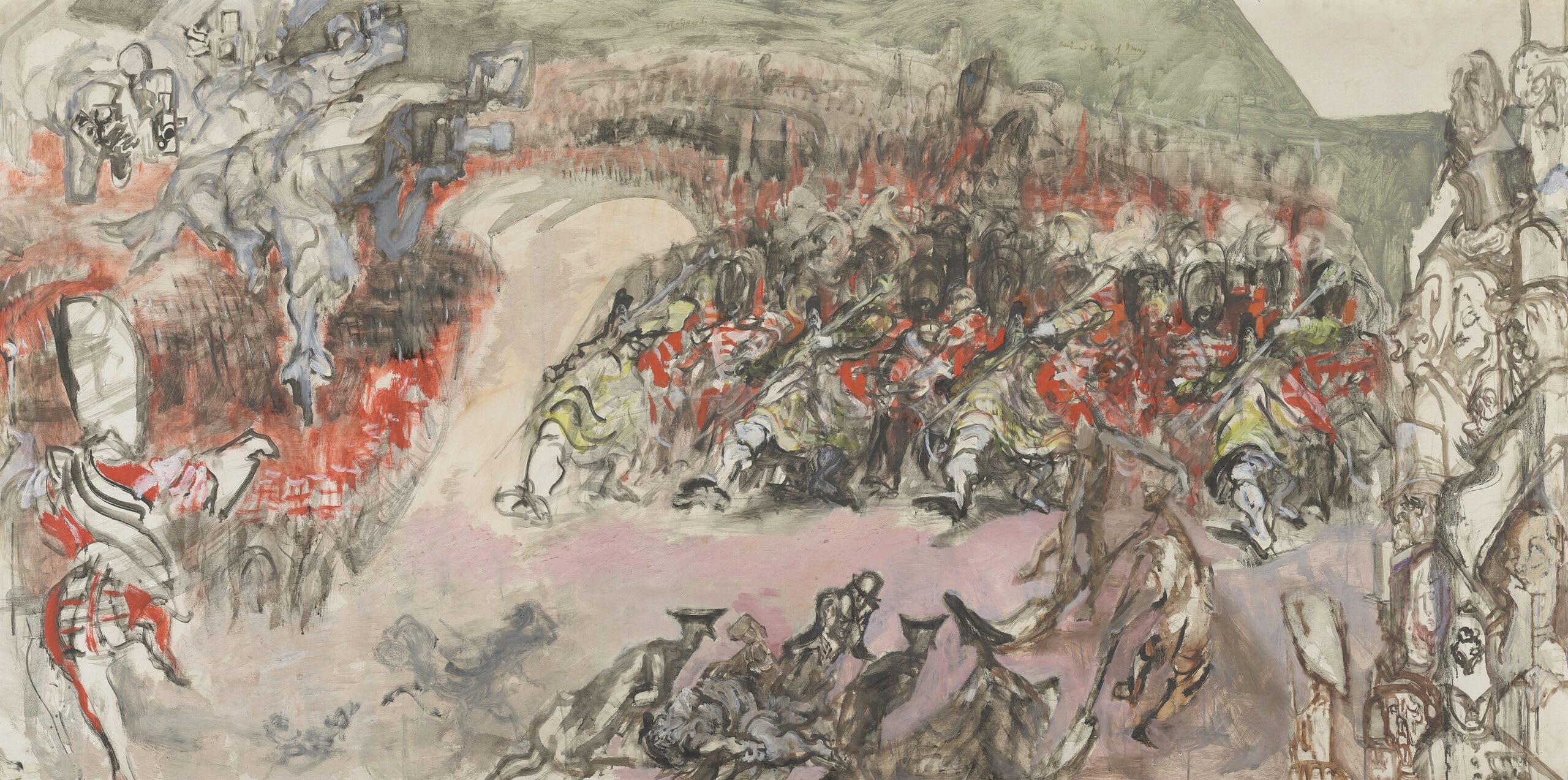
I. Feliks Topolski RA
Feliks Topolski RA (1907-1989) was one of Britain’s most famous 20th-century painters, draughtsmen and celebrities. He came from a Polish-Jewish family, and trained at the Warsaw Academy of Fine Arts (1927-1932), before settling down in London in 1935; he gained British citizenship in 1947. Topolski was an official World War II Artist to British Government as well as the Polish Government-in-Exile; author of the largest mural at the Festival of Britain; Royal painter; illustrator of the classics of literature; portraitist of key public figures; and recorder of Britain’s cultural and social life.
Topolski was a modern ‘History Painter’, documenting current affairs by means of eye-witness reportage. His own broadsheet Topolski’s Chronicles became the artist’s vehicle for publishing drawings from his travels around the globe, often accompanied by writings. His focus was anthropological, always highlighting the faces, dress, customs and the grand human theatre of existence. He was frequently concerned with the anticipation and aftermath of public events, portraying the divide between the onlookers’ experience and the key protagonists. The Chronicles, in turn, gave rise to Topolski’s public painting installation, the ‘Memoir of the Century,’ doubling as his pictorial autobiography and a personal view of the 20th C.
Topolski was a cosmopolitan globetrotter, a respected fixture of the British art world and high society, as well as a pillar of the Polish émigré community in London. He was the only Polish artist other than Jan Matejko to have received an honorary doctorate from Jagiellonian University. He made it into Who’s Who (1986), the Oxford Dictionary of National Biography, and was appointed a Royal Academician (1989). He thus commented on his ‘rare position’ as ‘a fully formed Pole, who ventured into the world, not driven out by history, and fell in with another country without the bitterness of an émigré. Hence one who looks not wholly from the inside nor wholly as an outsider.’
Feliks Topolski RA (1907-1989), Untitled Self-Portrait, From Topolski’s Chronicle, Lithograph and Collage on paper, Vol. XV, No. 24, 1973, © Topolski Estate
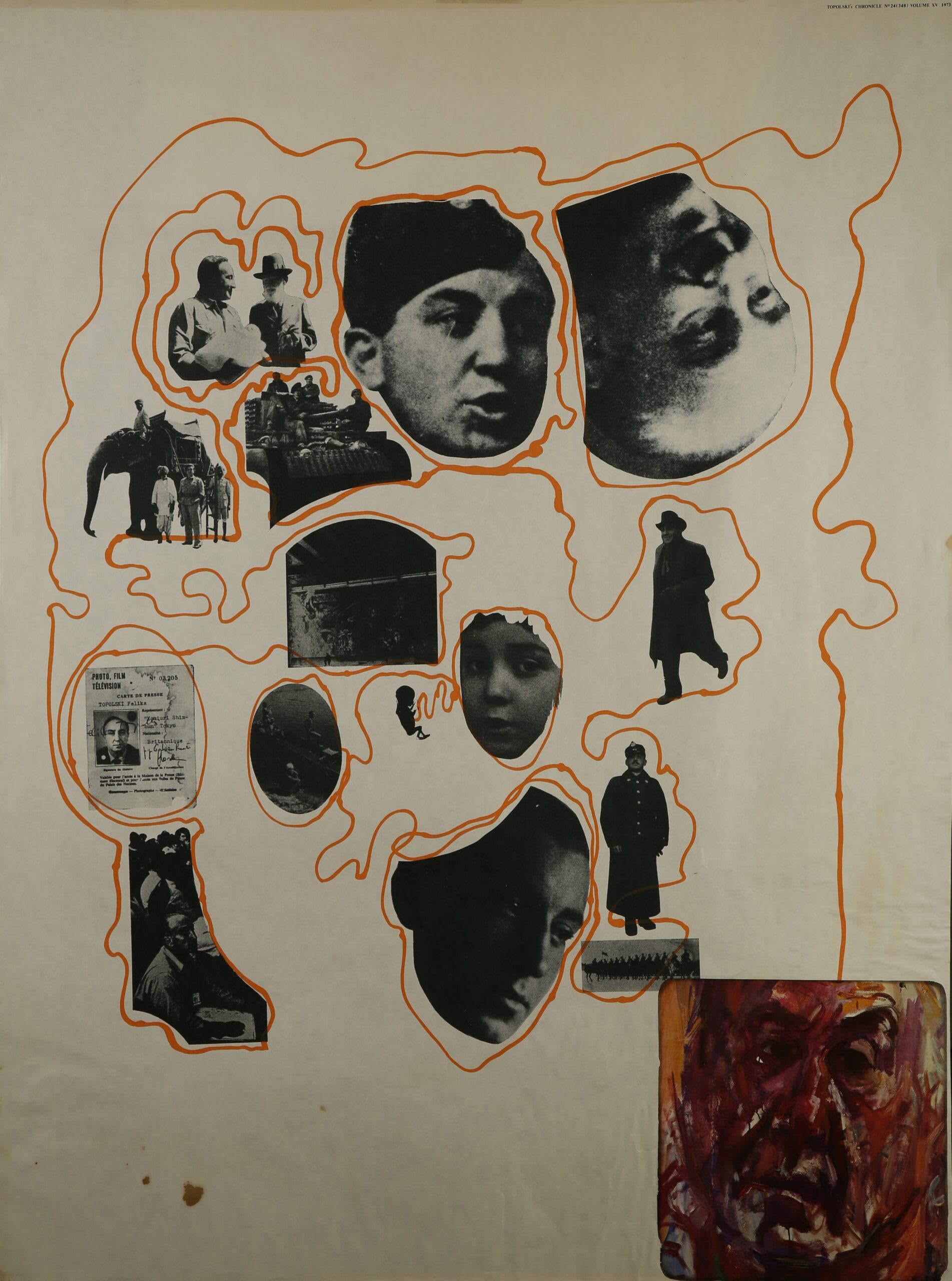
II. Royalty/ Establishment
Topolski developed an instant fascination with British culture when he was commissioned by the Polish newspaper Wiadomosci Literackie (Literary News) to record King George V’s Silver Jubilee. In fact, it was this Royal occasion which prompted him to settle down on British soil.
Topolski forged a close friendship and artistic relationship with HRH Prince Philip, Duke of Edinburgh. He was entrusted with designing the menu for Prince Philip’s Bachelor Party and was appointed as Vogue’s royal correspondent at his wedding to HM Queen Elizabeth II. The artist was subsequently commissioned by the British government to document the Queen’s Coronation in 1953. The latter acted as a catalyst for the Topolski’s Chronicles, and formed the basis for the Coronation Panoramas, a major commission from Prince Philip that still hangs in Buckingham Palace. Topolski also recorded the Royal couple’s state visits to North America and Portugal in 1957.
Topolski’s handling of Royal occasions was illustrative of his overall approach to reportage – as showcased in the Chronicles – retaining total creative freedom and a commitment to impartiality, depicting the experience of a broad social spectrum, and letting his viewers decide what they thought of each event. Patronised by Royalty, Topolski was also a dedicated champion of accessible art, embarking on multiple public projects, and standing as witness in the Oz obscenity trial in defence of artistic freedom.
Feliks Topolski RA (1907-1989), Prince Charles at Polo Practice, From Topolski’s Chronicle in Quarto, Vol. XVI, No. 4 (352), 1982, Based on a drawing from 1979, Print on paper, © Topolski Estate
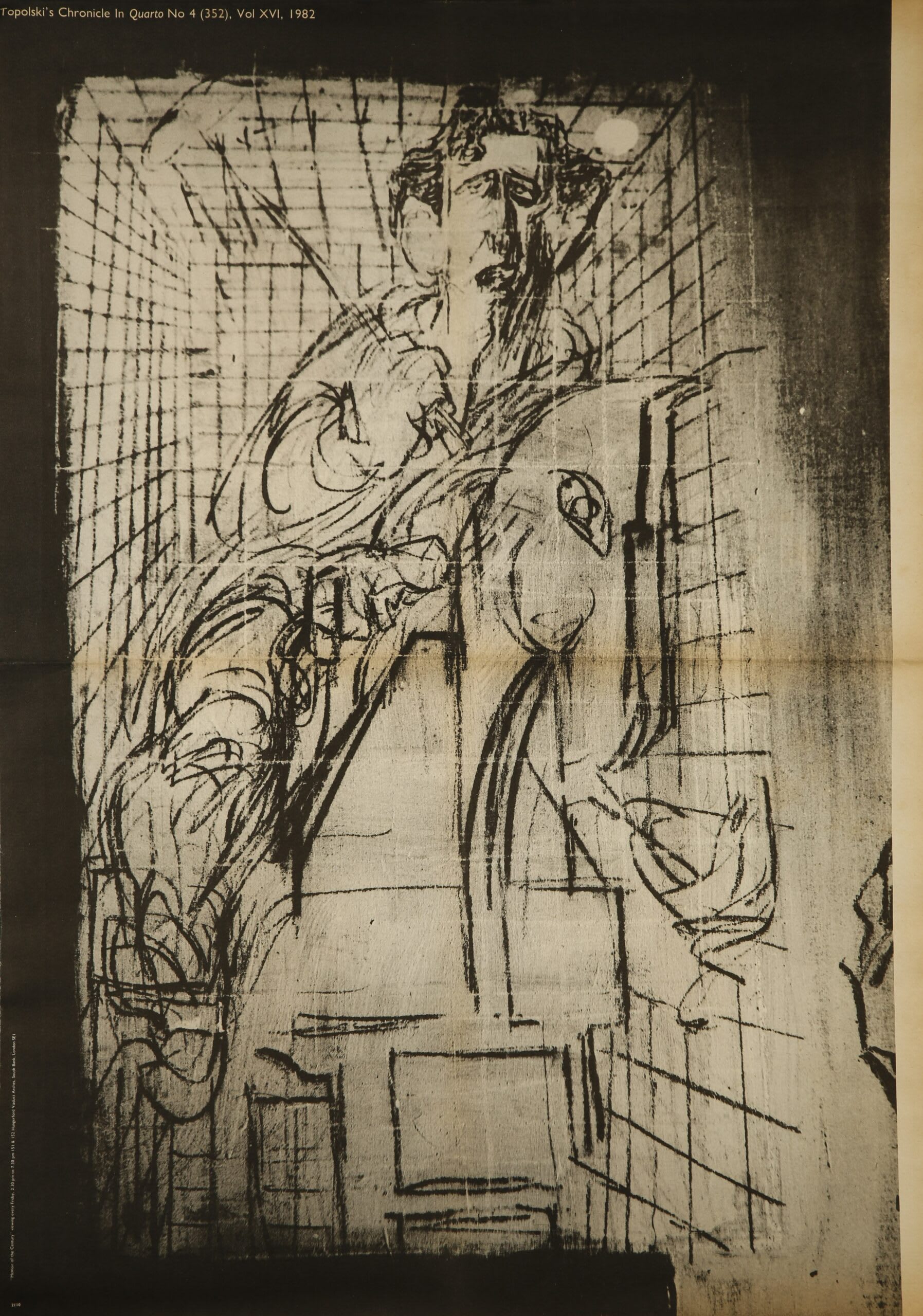
III. Counter-Culture
The Chronicle expresses a deep curiosity and tenderness for the human experience at all levels, not just its most prominent. Topolski’s insatiable appetite to record it all led him also into streets, nightclubs and debating chambers to document an enormous range of cultural and political movements that emerged throughout the last century.
Much of the Chronicle is devoted to the documentation of everyday life on an international scale, along with its underrepresented figures and movements. From foot soldiers in Vietnam during both the French occupation and the American war, to theatre groups, performers and fashion designers in Cuba, Burma (Myanmar) and Paris. Or else the seedy and counter-cultural underbelly of London’s Teddy Boys, Hippies, Vagabonds and Punks. All were recorded by Topolski, and looking back allows us to understand ourselves and our times as paths taken within the flow of human history.
In the foreword to an exhibition at the ICA in 1980 on the subject of the Chronicle, Sandy Nairne wrote that we ‘are given real information about that moment, not information that has been framed by a publicity machine or rendered disposable by the media.’ Reportage drawing has the peculiar quality of being able to engage the viewer intellectually, allowing them to pause to take in the image and thus engage directly with current affairs, guided by the hand of the artist.
It is hoped that the present exhibition helps bring Feliks Topolski back into public memory in Britain and Poland.
Feliks Topolski RA (1907-1989), Extract from American Section of the ‘Memoir of the Century’, 1970, Topolski Memoir, © Topolski Estate
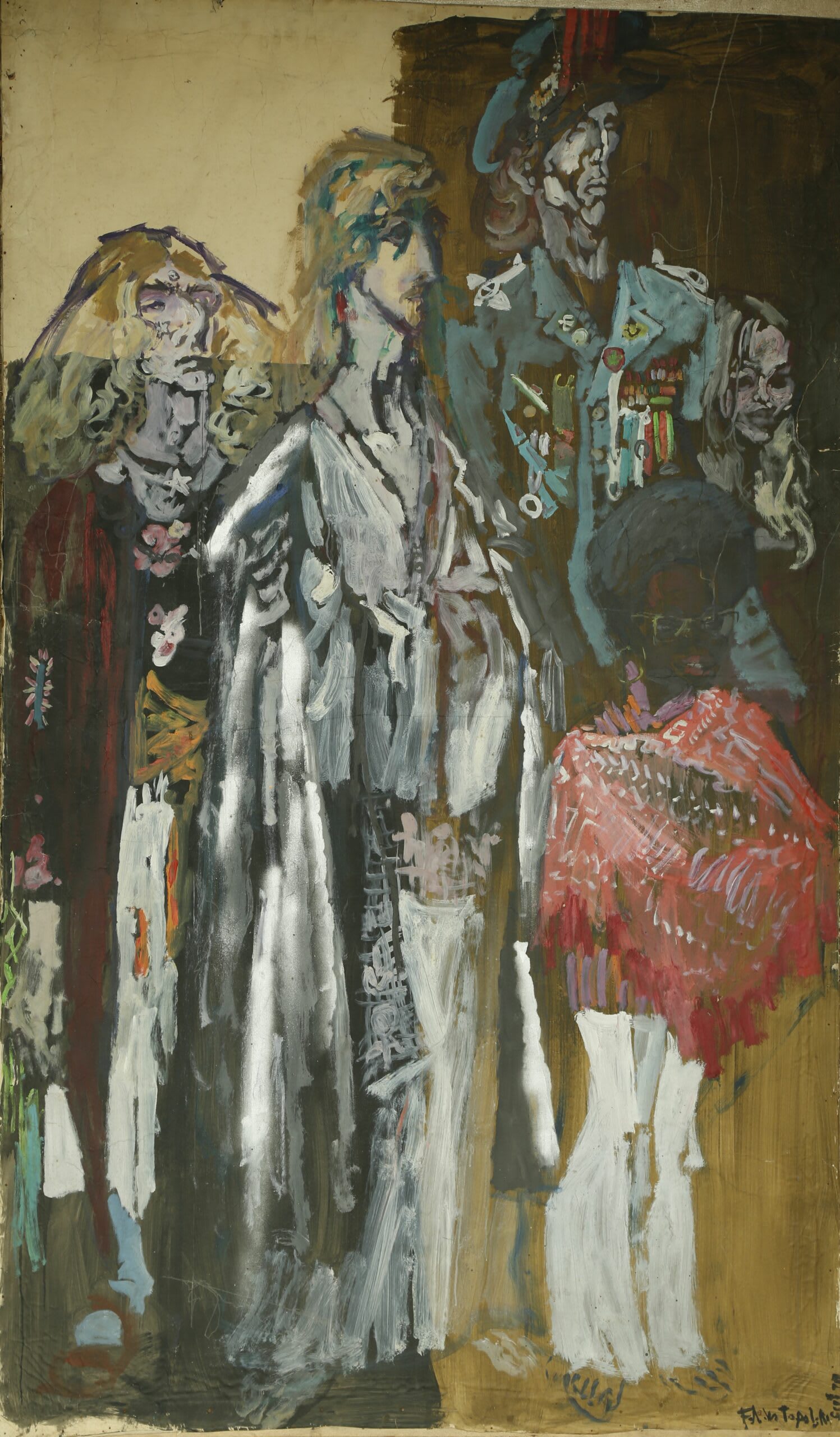
Acknowledgements
Following the launch at Topolski Studio on the Southbank on 3 May, the exhibition has now moved to POSK Gallery in Hammersmith. The exhibition is co-organised by the Granville-Skarbek Anglo-Polish Cultural Exchange and the Topolski Memoir. The Exchange has been originated by POSK – the Polish Social and Cultural Association, and is delivered in partnership with the Polish Cultural Institute in London and Ognisko Polskie.
Co-curated by Dr Julia Griffin & Lucien Topolski
Graphic Design Artwork: Eva Martin
Graphic Design Production: Creative Key
Exhibition Build: Souvenir Scenic Studios
Feliks Topolski RA (1907-1989), Speakers’ Corner, part of London Suite, Lithograph on paper, 1973, © Topolski Estate
